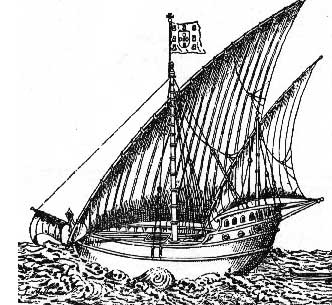Caravel

Before the introduction of the Caravel, most ships that navigated the seas were either the square-rigged barca or the larger Venetian Carracks. These older vessels were designed to sail primarily with the wind and were especially useful for transporting substantial cargo over long distances.
Recognizing the need for a more versatile exploration vessel, Portuguese ship designers sought inspiration from diverse sources. They combined features of the Arab Caravas, which were known for their sturdiness, with the agility of Portuguese river boats called Caravelas. The result was the Caravel.
The Caravel was a game-changer in maritime exploration. It was spacious enough to accommodate supplies for a crew of twenty and had a displacement of fifty tons. Measuring approximately seventy feet in length, its design was both robust and streamlined. However, the Caravel's most revolutionary feature was its sails. Unlike its predecessors, the Caravel could sail much closer to the wind, allowing it greater maneuverability and the ability to explore regions previously inaccessible to other ocean-going ships.
Notably, when Christopher Columbus embarked on his historic voyage to the New World, he commanded a fleet of Caravels: the Nina, the Pinta, and the flagship, the Santa Maria. These vessels, with their advanced design, played a crucial role in the age of exploration and the subsequent discovery of new lands.
.
 >
>